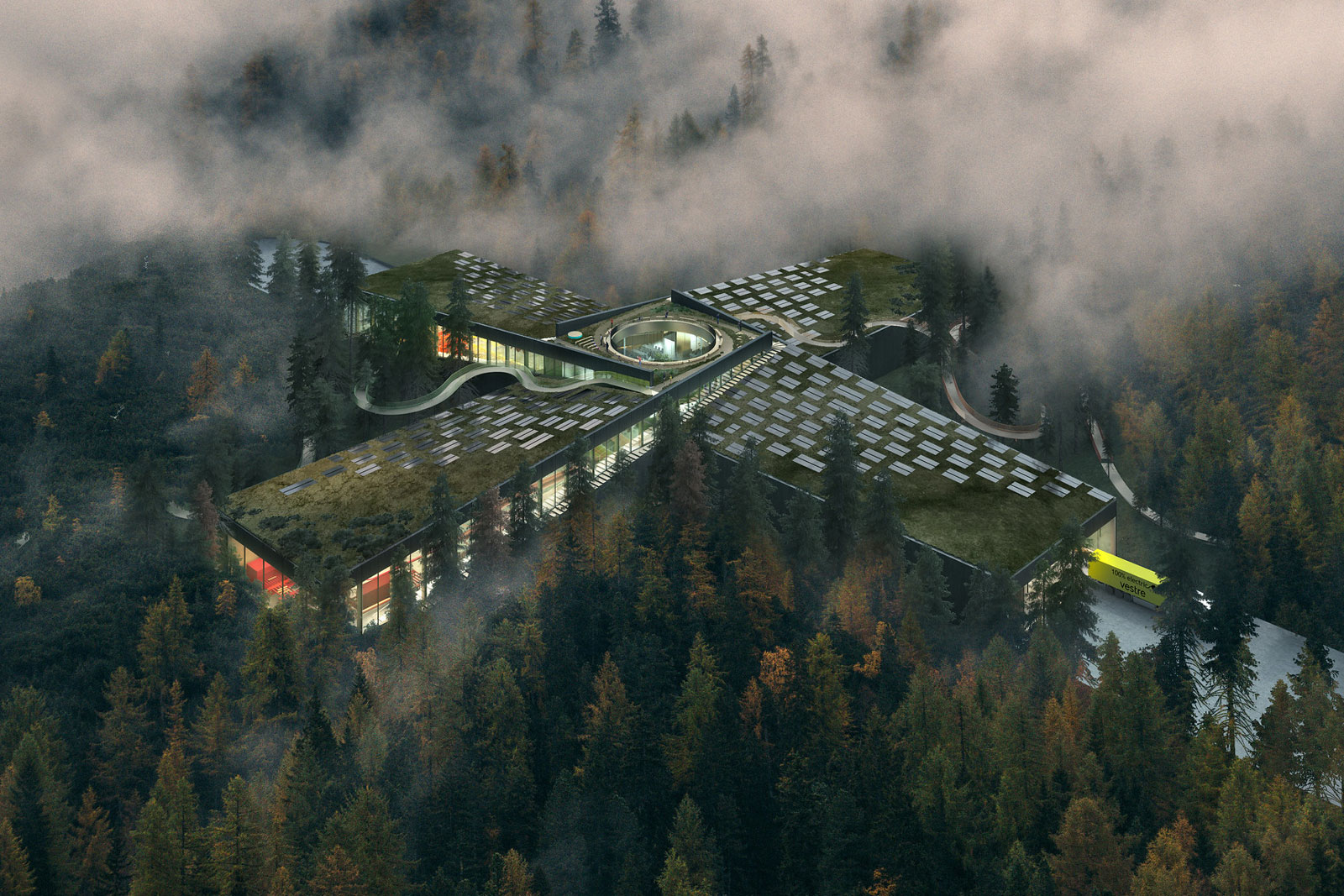Inside the Norwegian CEO’s journey to build the world’s most sustainable furniture factory—and make furniture that lasts forever
Jan Christian Vestre was just 25 years old when he took over the namesake outdoor furniture company founded by his grandfather in 1947. Now 32, Vestre was named Norway’s 2019 Entrepreneur of the Year, and he spoke at Oslo Innovation Week’s 2020 virtual conference about the challenges of manufacturing and his quest to build the world’s most sustainable furniture factory—The Plus.
We recently caught up with Vestre to find out more about his mission to change the industry, from stopping the push for new products every year to making a truly transparent factory.
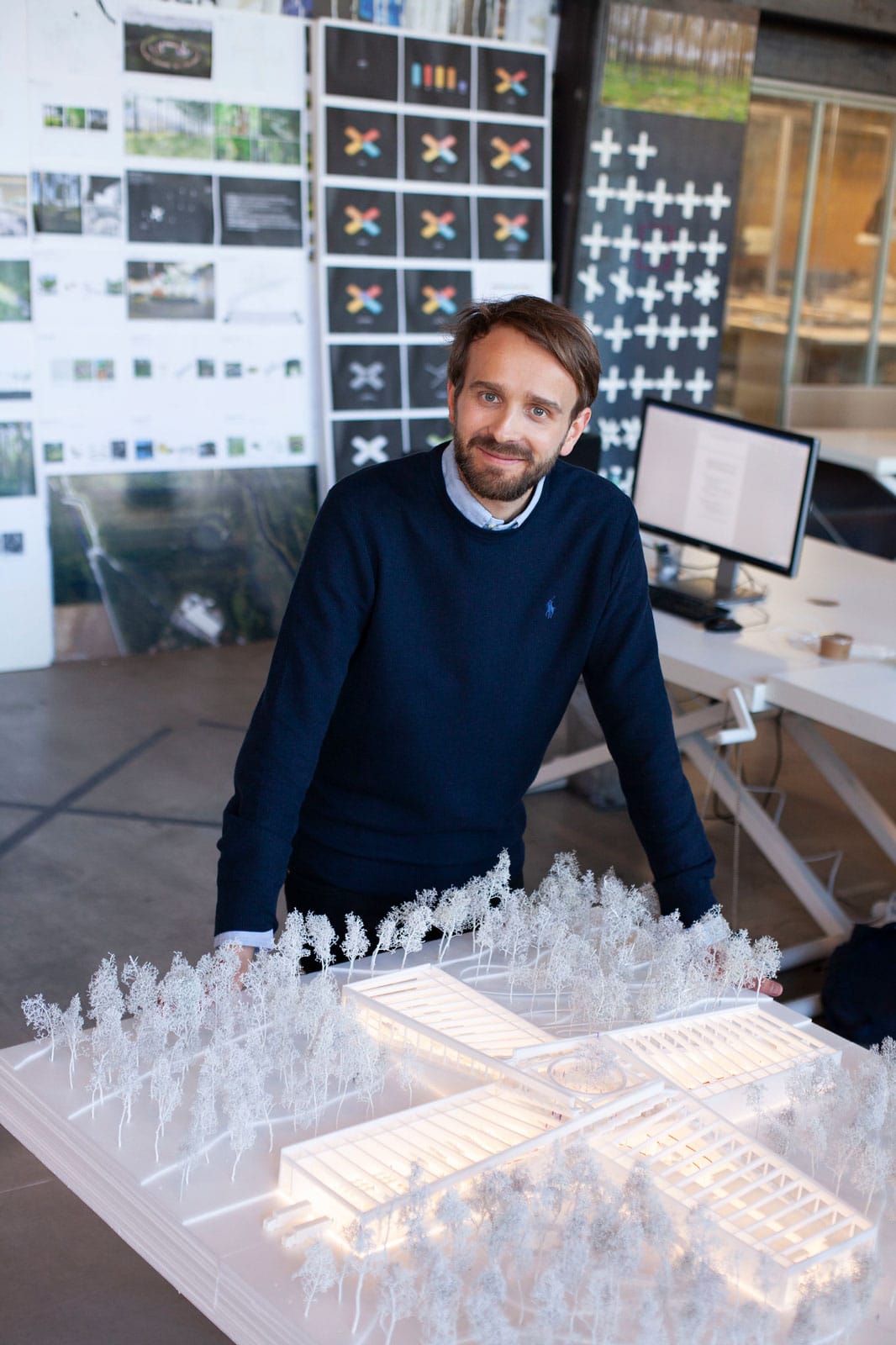
Jan Christian Vestre, CEO of Vestre, with a model of The Plus. Photo by Michelle Berg
How did you find yourself in the position of CEO of one of Europe’s top outdoor furniture manufacturers?
I took over the responsibility for the family business at the age of 25, when my father passed away. It’s been quite a journey so far. It would never have been possible if it was not for my colleagues, I call them my family—the most creative, passionate, loyal people you can imagine—and we all share the same drive for creating a better world. I don’t know any other company that focuses so little on the bottom line and so much on sustainability and doing the right things, but still being profitable. That’s because of the people in the organization.
What is your vision for The Plus?
We want to show to the world it’s possible to solve the climate crisis, protect and restore nature and biodiversity, and at the same time create new, enjoyable, and profitable jobs. There is too much talk about the green shift; we want to see more and real action. And we want to contribute to a less polarized debate about these issues by bridging the gap between climate activists and people concerned about the economy.
The Plus is an entirely new typology where people, production, technology, architecture, and nature are completely integrated with each other. I mean, we are building the most environmentally friendly furniture factory on the planet, but I’m pretty sure The Plus is also the most open and transparent factory the world has seen until now.

Bjarke Ingels (founding partner of BIG) and Jan Christian Vestre (CEO of Vestre) discuss the latest plans for The Plus. Photo by Michelle Berg
What’s the timeline for all of this? And what has it been like working with Bjarke Ingels Group?
We went to the site with BIG less than one year ago, and now we have started preparing the construction site. I’m thrilled, and I cannot wait to see the building rise in between the trees we carefully protect. We have a very ambitious time schedule. The factory should be fully operational in late autumn 2021.
We love working with BIG. The first time we met in Copenhagen I told them we are going to do something that has never been done before, and we are about to define a new global benchmark for the manufacturing industry. BIG fell in love with the vision from Day 1, and the result is better than we could imagine.
We haven’t made any compromises on sustainability. The team consists of people from almost 15 nationalities—Denmark, the US, Mexico, Germany, Brazil, the UK—and they’ve all contributed with creative ideas, experience, and knowledge from their own backgrounds.

Vestre’s color and wood factory. Courtesy of BIG/Vestre
But just how do you build the world’s most eco-friendly furniture factory? Do you think it’s fair to call it that?
The Plus is the first ever furniture factory that meets the highest BREEAM Outstanding environmental certification, and as far as I know we are the first ever “Paris proof” furniture factory, meaning we will not only meet the climate targets in the Paris Agreement (40% reduction before 2030), we are actually over-fulfilling the agreement by reducing our emissions by more than 50% compared to a similar new factory.
Our factory runs on 100% renewable energy and has a very advanced energy system with solar panels, heat exchangers, heat pumps, accumulator tanks, and geothermal energy wells that will reduce our supplied energy need by more than 90% compared to a similar new factory.
We will also reuse 90 to 95% of the process water and replace traditional chemicals with new eco-friendly alternatives. The factory itself is made from sustainable glulam and CLT, low-carbon concrete, and recycled reinforcement steel.

The Plus. Courtesy of BIG/Vestre
You also want the factory to be an attraction?
My goal is for The Plus to be named as a must-see destination on TripAdvisor. I’m pretty sure we will get there.
Why? Well, we have spectacular architecture, super cool industry 4.0 manufacturing technology such as self-teaching robots, autonomous forklifts, and Tesla semi-trucks, a beautiful forest surrounding the factory, and a 300-acre experience park with art installations, poetry, playgrounds, and other excitement for the whole family to enjoy.
Remember, most factories are fenced in, closed off, and pretty hostile. Our factory has no fences. People can watch the manufacturing through the large windows whenever they want. They can even access our rooftop 24/7. I mean, can you imagine anything more romantic than kissing the love of your life on top of the most environmentally friendly furniture factory in the world, surrounded by spectacular architecture and a magical forest?
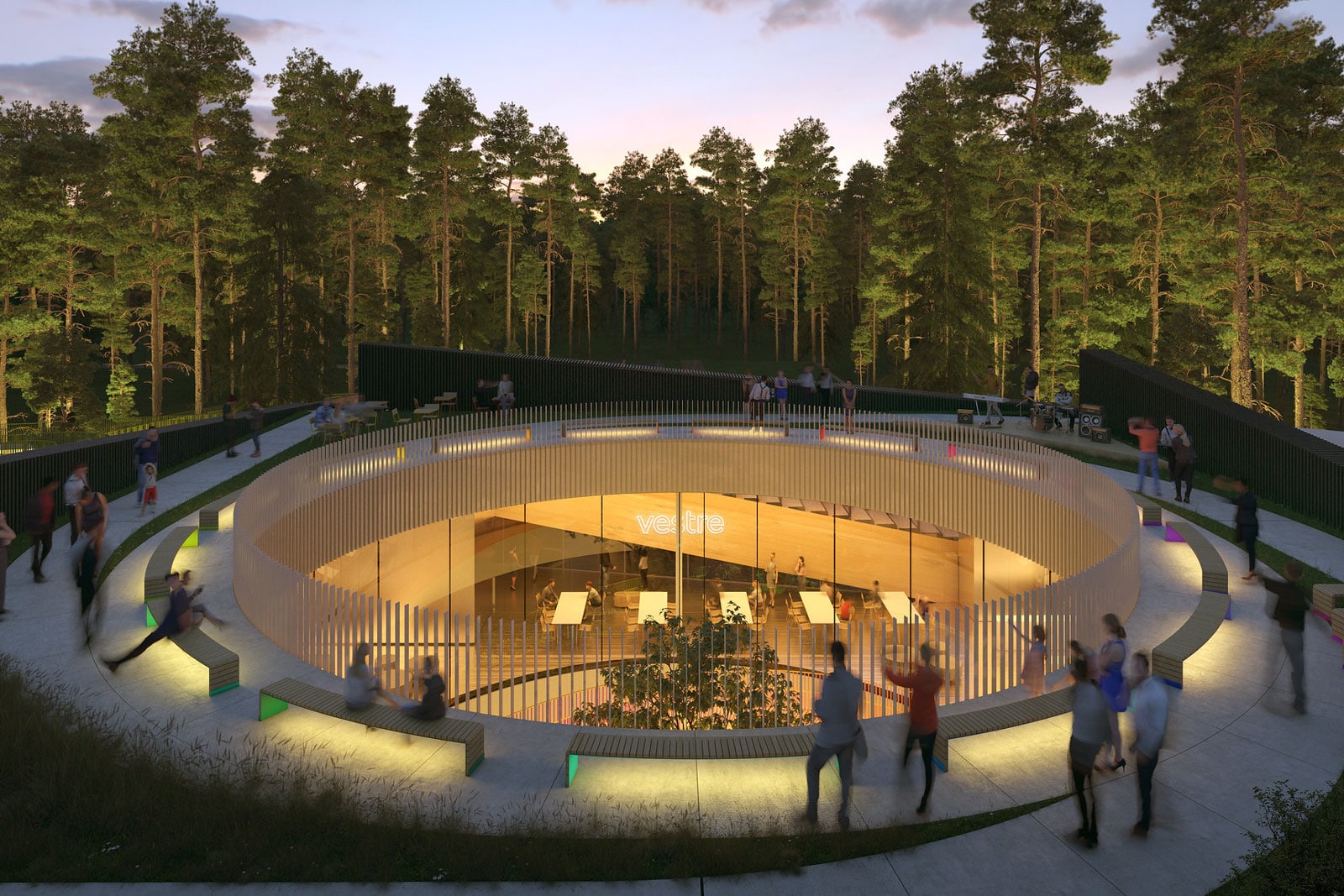
Vestre CEO Jan Christian Vestre says the factory will have its own production flow for refurbishment of old furniture. “All products leaving The Plus will be circular—some for the first time, others have been manufactured many years ago and are now refurbished. Vestre Vision Zero could reduce the use of resources by more than 80%.” Courtesy of BIG/Vestre
Talk about the triple bottom line—economic, ecological, and social sustainability. What does that have to do with The Plus?
I strongly disagree with (American economist) Milton Friedman, who stated that a private company’s only social responsibility is to increase its profits no matter what. This short-term, egocentric way of thinking is the reason we are facing a manmade climate crisis and the reason why 800 million people are still living in extreme poverty while the richest are getting even richer.
I mean, of course we have to be profitable to be able to create jobs, make investments, pay taxes, and contribute to society. But this is really not enough today. Private companies cannot close their eyes to the fact that we are facing major global challenges, and we all need to step up and ask ourselves how we can contribute to a more sustainable and fair world.
This is the whole idea behind the UN’s Sustainable Development Goals (SDGs), too. I don’t want to earn money on things that are bad for people and the planet. This is why we refuse to do hostile designs—for instance benches with spikes and other obstacles designed to keep homeless people away, or products that are not designed to last very long or made of harmful materials.

You’ll find Vestre’s outdoor public furniture all over the world, including in Times Square. Photo by Júlia Martins Miranda
We could have increased our bottom line by doing projects like that, but we never do. And I hope many more companies will follow. Imagine the impact we can have together.
Vestre’s goal is to be recognized as the most sustainable furniture brand in the world. We have integrated 9 of the 17 SDGs in our business philosophy. Every year we donate 10% of our bottom line to sustainable projects around the world—supporting education, women’s health, eco-friendly startups, collecting ocean plastic, to mention a few examples.
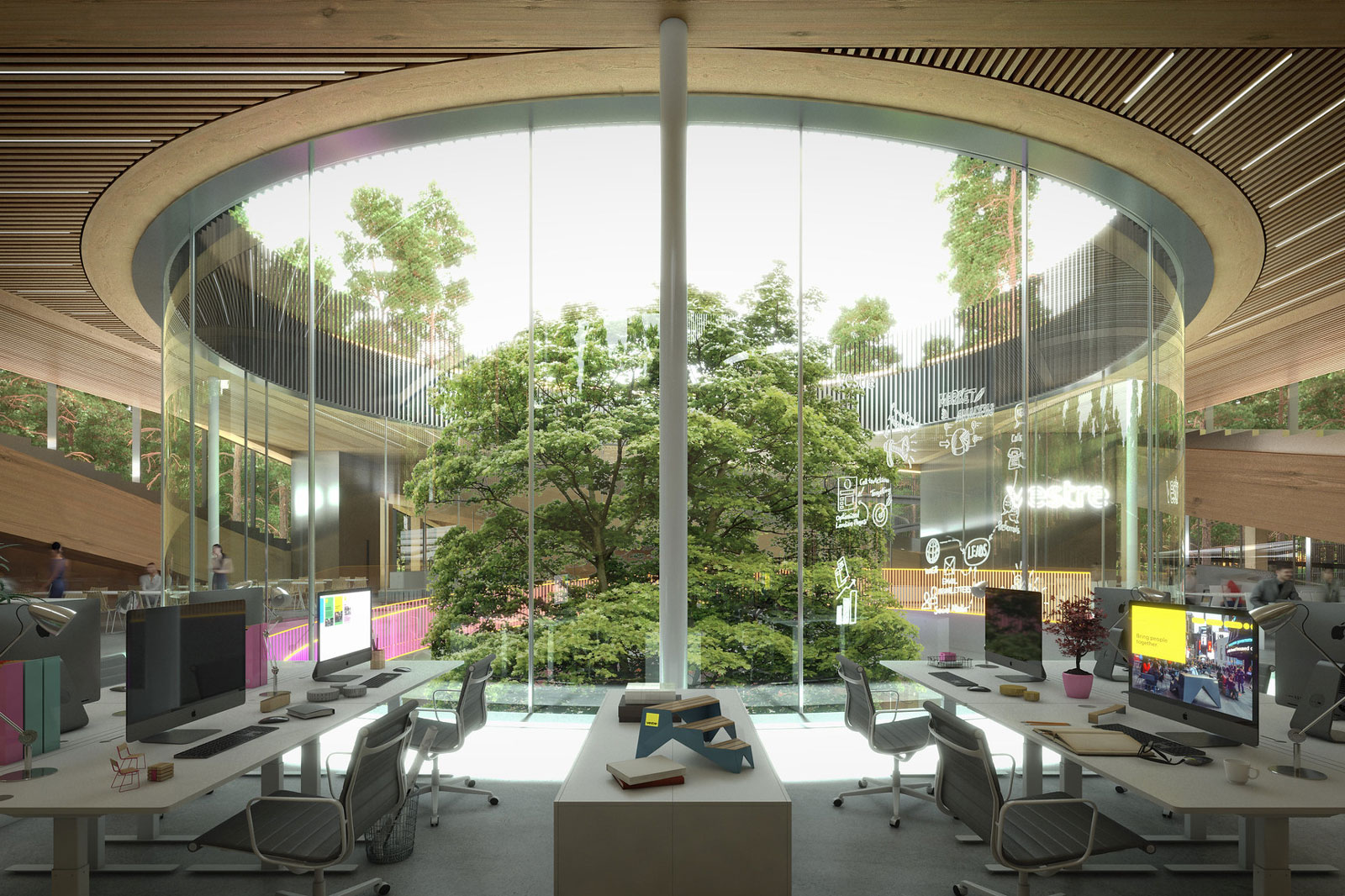
Inside the offices at The Plus, Vestre’s color and wood factory. Courtesy of BIG/Vestre
What is the meaning and origin of Vestre Vision Zero?
Vestre Vision Zero means we will not make a single product that isn’t intended to last forever. This is possible because of uncompromising quality and new circular business models where we actually take responsibility for the products throughout the entire lifetime, meaning we can provide maintenance and we can take back and restore old furniture and make things look bright and new with a minimal use of resources compared to making new products.
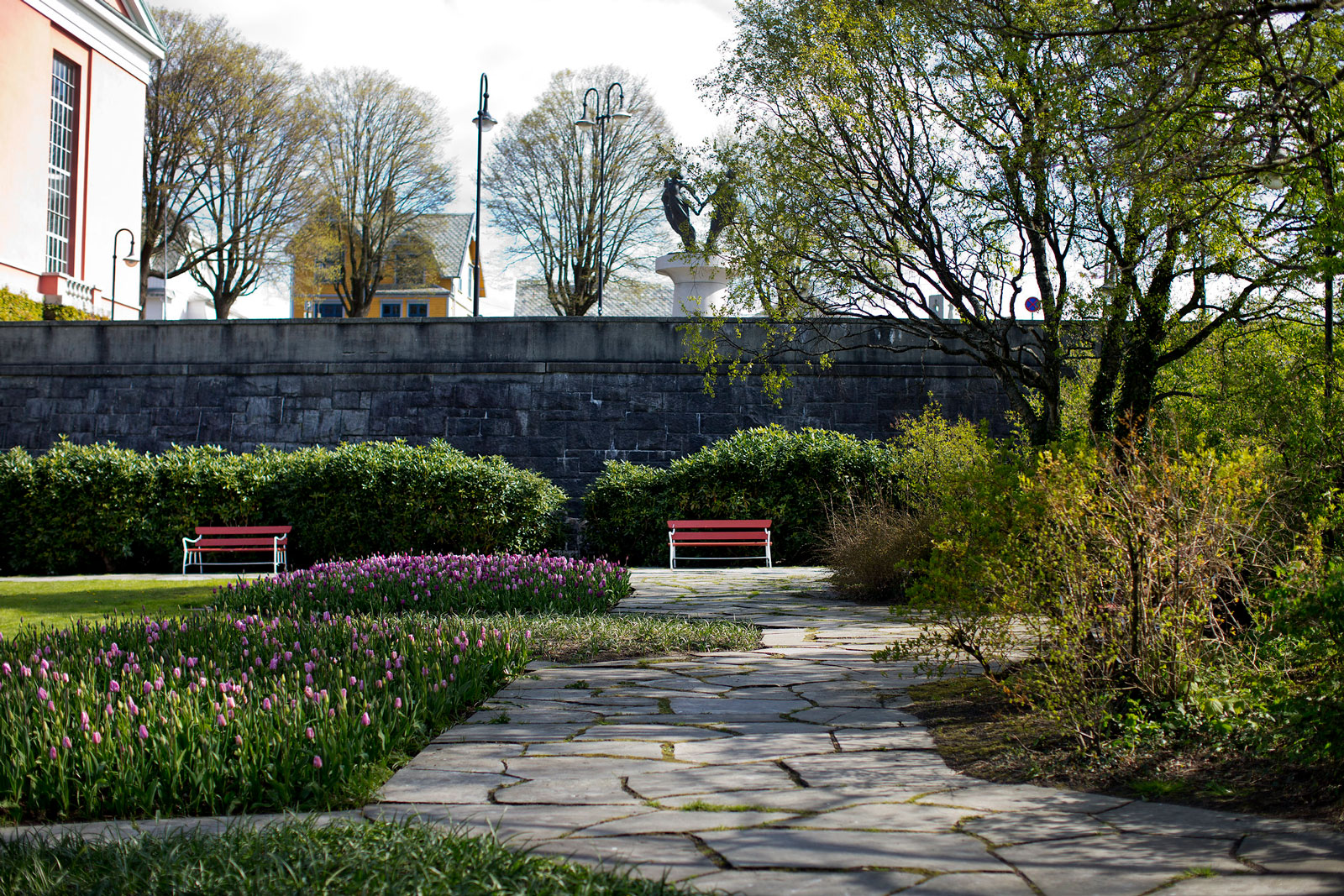
Travel around Norway much and you’ll find Vestre furniture that dates back to the ’50s, ’60s, and ’70s. “A good example is the town hall park bench in Haugesund, a small city on the harsh Norwegian west coast, which have been around for almost 70 years now. Some people say it is difficult to make quality products, but that is nonsense,” says Jan Christian Vestre, CEO of Vestre. Photo by Haakon Nordvik
Where do you see manufacturing and design going in the future?
The industry needs to make major changes. Manufacturing of throwaway products must stop now. We need to implement circular business models throughout the value chain. All products must be able to be repaired and restored. The manufacturing must be based on renewable energy and more sustainable materials, such as recycled metals.
The push for new products every year must stop. Why do we need a new sofa every five years? It should last for 25 years at least, and if you get tired of the design, send it back to the factory, have it refurbished and get a new color, so it continues the journey in another home.
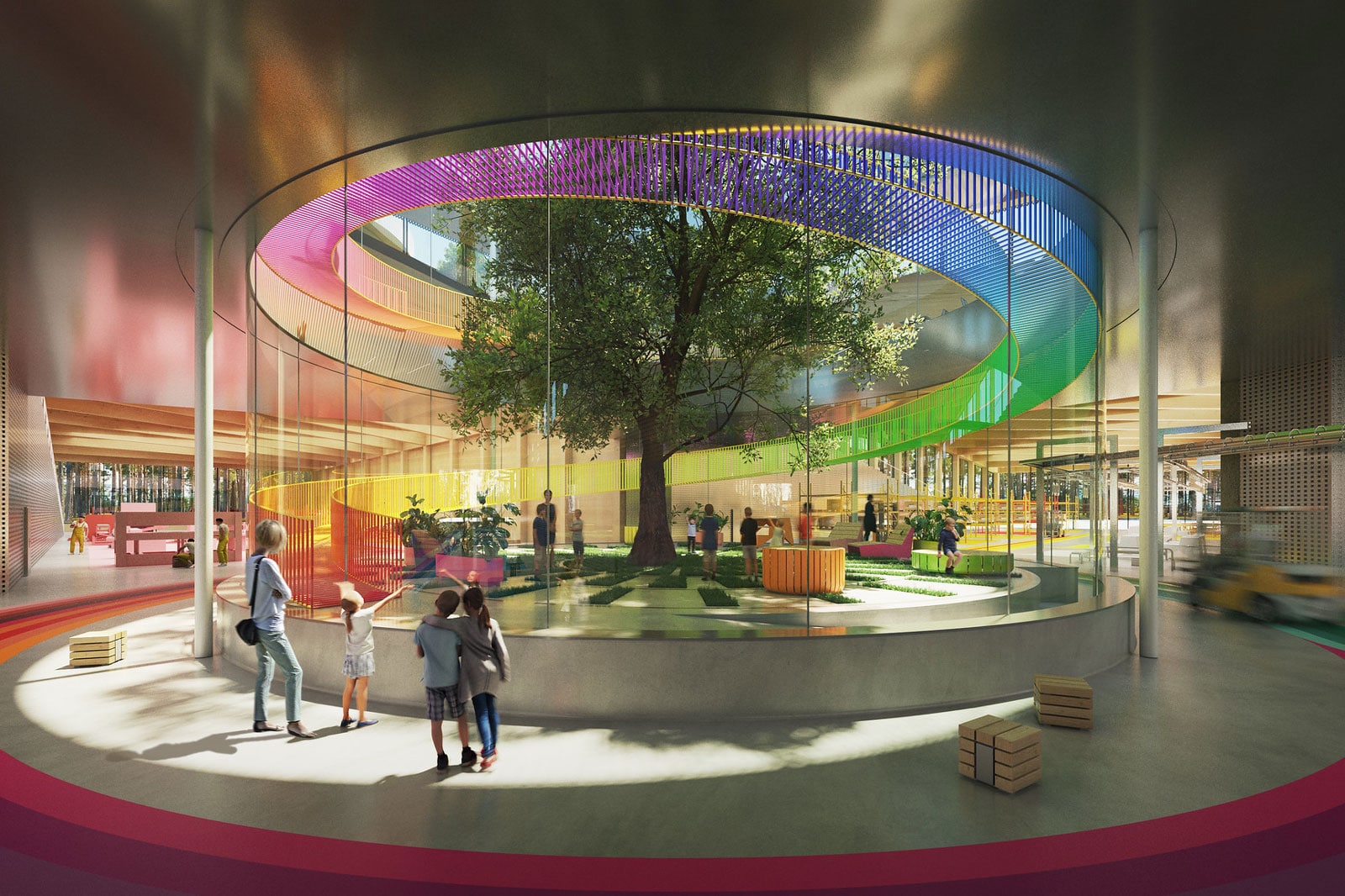
The Plus. Courtesy of BIG/Vestre
What do you hope others will learn from practices Vestre has undertaken?
The most important thing is to understand there is no conflict between sustainability and creating new jobs. It is possible to expand the business and at the same time reduce the emissions and use of resources.
I believe in green growth, and I don’t really see any alternatives to this approach. And remember, sustainability is not gray and boring; imagine the fantastic possibilities we have today, with new technologies, international collaboration, and more knowledge than ever before. A sustainable world is better for all of us.
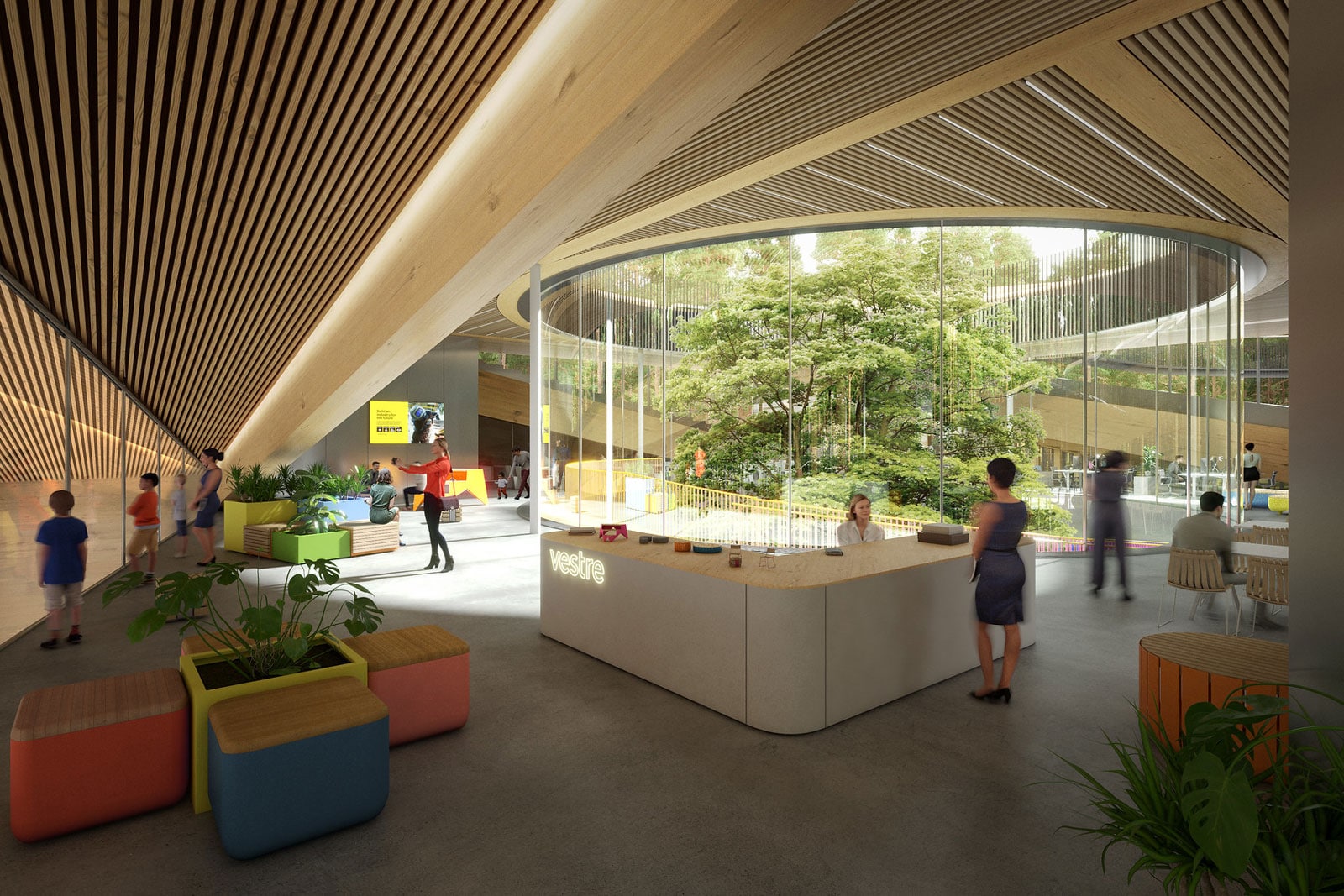
Inside The Plus. Courtesy of BIG/Vestre
What advice would you give to someone else starting out in this industry and wanting to make a difference?
Ask yourself how you can contribute to a better world. Use the SDGs as a framework: The global goals are easy to implement, people understand them, and they create a lot of excitement in the organization.
Never take shortcuts. Don’t compromise on your values and ideals. Be passionate and think long-term. Hard work leads to the best result. By following these simple guidelines, I’m pretty sure everyone will have success, no matter what kind of business they are in.
What’s next?
Furnish the Moon, perhaps?

